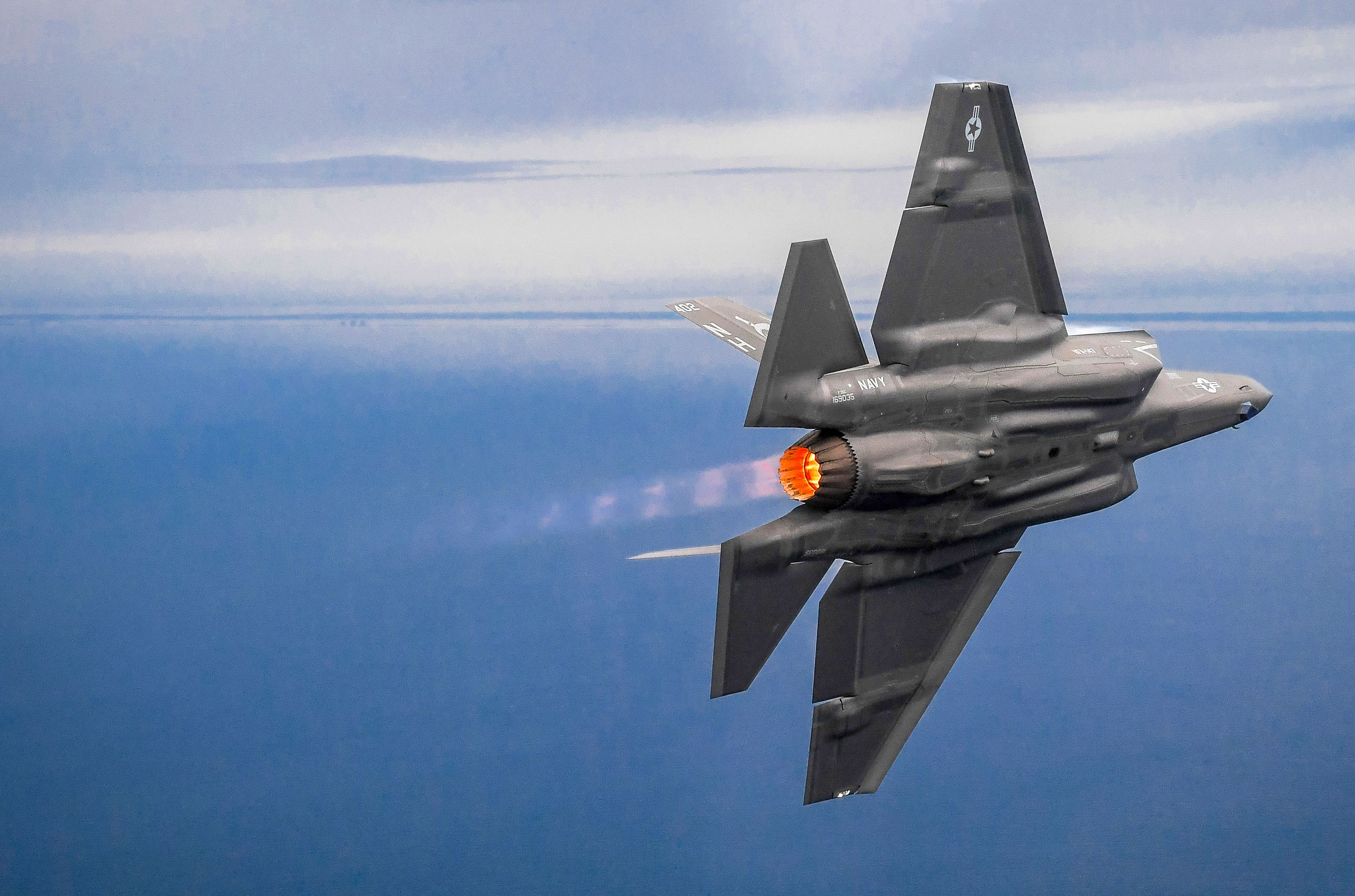
WASHINGTON, D.C. – The Navy is unclear how it will proceed with its next generation of aviation combatants following the introduction of the F-35C Lighting II Joint Strike Fighter into the carrier air wing, Chief of Naval Operations Adm. Mike Gilday said on Thursday.
After years of churn, the service is in the midst of a wide-ranging evaluation of its fleet design and future capabilities that will shape the service’s force structure. The evaluation pays particular attention to unmanned systems, unlike previous efforts. In particular, the Navy doubled down on investment for unmanned surface vehicles as part of the its Fiscal Year 2020 budget submission.
However, the Navy has lagged in development of a next-generation, carrier-based combatant since it abandoned a planned unmanned, low-observable strike aircraft program in favor of the simpler MQ-25A Stingray unarmed tanker.
Over the last 10 years, the Navy has moved from an F/A-18E/F Super Hornet replacement, or F/A-XX, to a “family of systems” approach under the banner of the Next Generation Air Dominance program in 2016.
Gilday indicated the Navy is still working on the question of what the next combatant after F-35 will be, or even if it will be launched from an aircraft carrier.
“I do think we need an aviation combatant, but what the aviation combatant of the future looks like? I don’t know yet. I think there’s going to be a requirement to continue to deliver a seaborne launched vehicle through the air that’ll deliver an effect downrange,” Gilday said at U.S. Naval Institute’s Defense Forum Washington conference.
“I do think that that will likely be a mix of manned and unmanned. The platform which they launch from? I’m not sure what that’s going to look like.”
His comments come as the Navy’s carrier fleet is under increased scrutiny from Congress and the White House for the cost of the programs.
The service, in particular, has been questioned for not developing a longer-range air wing to keep up with the increased range of Chinese anti-ship ballistic missiles that put the multi-billion capital ships at risk.
Earlier this year, a report from the Center for Strategic and Budgetary Assessments said in order for a future carrier air wing to be effective in a major conflict with China, it would need to field a combatant that could fly sustained combat air patrols up to 1,000 nautical miles from the carrier. That’s 400 nautical miles beyond the effective combat radius of the F-35C and 500 nautical miles more than a current F/A-18E/F Super Hornet.
The March report, Regaining the High Ground at Sea: Transforming the U.S. Navy’s Carrier Air Wing for Great Power Competition, called for an unmanned combat aerial vehicle (UCAV) to keep the carrier effective in major combat operations.
At the time, the CSBA report reflected internal Navy thinking on the future of its air wing, USNI News understood. However, it’s unclear how changes to the air wing will be incorporated into the service’s new fleet architecture.





